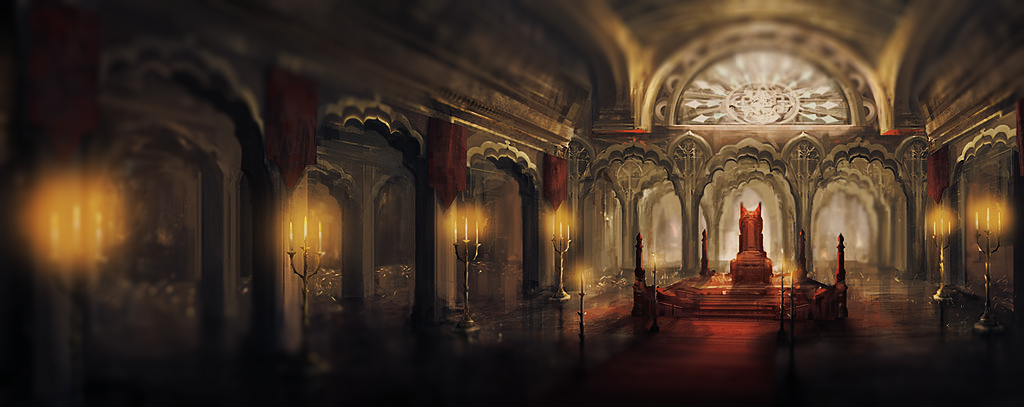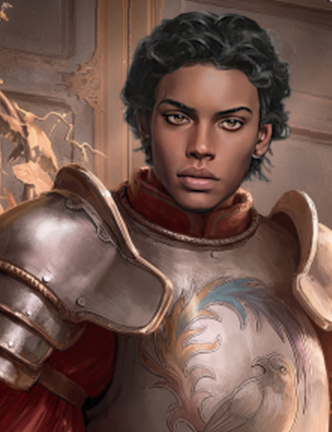Empire of Avaros
The Empire of Avaros was the vast swathe of territory controlled by the Avarosic Dynasty between roughly 2097 CE and 226 AE (754 years). Stretching from the province of Jullandy in the west across most of western Norvast to the fringes of the Ilumvir Empire in the east, the Empire of Avaros was one of the most powerful political entities ever to exist in Tevastra, and continues to represent the height of human achievement.
Upon the death of the last Empress in 226 AE, the Empire entered a precipitous decline as its various provinces seceded without any prospect of strong central leadership. In the several centuries since, Avaros has become little more than a memory, an ideal to be strived for, as the independent kingdoms which once constituted it have developed their own unique cultures with the exception of Ehr Nuvale.
Structure
The Empire of Avaros was a decentralized confederation of various human cultural groups including the Walstoners, Jullandians, Zethuniri and Ehr Nuvalans. Efforts to incorporate the Tevenar were utterly unsuccessful. At the top was the Empress, who retained the right to command the Empire's armies, requisition resources from the Empire's provinces, levy taxes from the nobility, and appoint Viceroys to govern her provinces (among many other day to day and ceremonial tasks).
The Empress' children (always a son and a daughter; see below) were immediately below her in rank. The imperial son held the title of Swordbearer, while the imperial daughter held the title of Crownbearer. The Swordbearer's duties included touring the Empire on behalf of the Empress, conducting internal military operations (the Empress endeavoured to never become involved with internal revolts to avoid validating them), and recommending candidates for Viceroyalties. The Crownbearer was the heir apparent to the title of Empress, and was thus the second highest rank within the Empire. The Crownbearer's duties included conducting external diplomacy and overseeing the Imperial Treasury. Additionally, all Crownbearers were extensively educated in the practice of arcane magic. The first Empress, recognizing the power of wizardry, had founded the Arcanum Collegium to bring such power under the Empire's control, and subsequent Empresses all learned magic to prevent wizards from being able to deceive them about its uses. Both the Swordbearer and Crownbearer had a host of attendants, staff and advisers who conducted the everyday running of the Empire, including taxation, recruitment, intelligence and construction.
Below the Swordbearer and Crownbearer were the Viceroys. As a new territory was incorporated into the Empire, the Empress would consult with its most influential figures and jointly appoint someone to rule there in her name - a Viceroy. In this way, the Empresses of Avaros were rarely seen as tyrants, even when territory was acquired through conquest. They enjoyed a largely stable rule by recognizing that local people were best situated to determine local issues.
The imperial military maintained its own standing army of spearmen to maintain order in the capital province of Ehr Nuvale, with smaller contingents stationed in each province. Each province was also allowed to have its own military (subservient to the throne), and these provincial armies varied widely in composition and number.
Culture
The culture of the Empire was highly regional, differing by province (see articles on Jullandy, Zethunir and Walston). The capital province of Ehr Nuvale had its own unique culture - Avarosic. The Avarosic people, named after the imperial dynasty which emerged from them, originated in the arid lands of Ehr Nuvale. They are known to be restrained but determined, showing a patience which is unique for the frenetic Human species. Avarosic garb notably features a large, loose outer covering of darkly dyed semi-transparent fabric, much like a cape that encircles the entire body, called the Urvosti. Underneath the Urvosti, the Avarosic favour form-fitting cotton tunics and trousers which are light enough for comfort in Ehr Nuvale's warmer weather. Avarosic prefer to carry their possessions by tying them to their clothes and hiding them beneath the Urvosti (which itself makes the use of a backpack difficult). One might see an Avarosic with their tinderbox hanging from their neck, their blanket tied around an arm, and their hatchet strapped to their leg.
Despite their somber nature, the Avarosic are great lovers of music. Few of them sing with any skill, but a few are masters of the liola, their unique stringed instrument. The liola is played by dragging a bow of plant husk across strings of sinew (the best strings said to be made from lions), producing a mournful and haunting sound. Compositions by Avarosic liola players, particularly the dirge 'Tears of the Crownbearer', are popular in taverns across Tevastra.
In the wake of the Empire's fall, many Avarosic were killed by infighting, or else forced to abandon their homes if they lived outside of Lothelir. Due to this diaspora, though Lothelir retains by far the highest concentration of Avarosic people, small groups of them can be found living in all of the Empire's former provinces.
History
The following is an entry from Pauliar Evaros' famous work, Civilization in Tevastra: A Treatise Concerning Movements and Developments of its Peoples:
"... As concerns Avaros and its Empire, the following can be said with certainty. It was vast, controlling in some fashion all present human territories and all the peoples therein. It was good, morally speaking, to the extent that it was highly successful in curbing inter-human aggression. And it was short-lived, in its eight centuries or so, as compared to its peers in the Ilumvir and the Cobalan (and, perhaps, the dwarven civilization of the Expanse). The miracle of its birth has been a subject of considerable conjecture, and I am aware of three predominant factors which were likely responsible. Firstly, the significant orcish presence in the Sword Pact during the Cobalan era, supposedly originating from the Godsreach range, had probably created a sense of desperation in the humanity of the time. A force capable of protecting them from the beastly onslaughts would surely have been welcomed. Secondly, the discovery by Avarosic arcane practitioners of magical communication, then later transportation, allowed coordination and logistical feats which would have been unparalleled at the time. Finally, and perhaps most contentiously, is the imperial line itself. The Avarosic dynasty, beginning with the first Empress Nurean Avaros, according to many folk tales was possessed of a certain presence or charisma. Put simply, they were highly adept at getting their way. Commoners' exhortations of divine ancestry aside, it cannot be denied that few other families have so shaped the fate of Tevastra. Additionally, their consistent pattern of birthing exactly one boy and one girl in each generation is more than curious..."
Disbandment
The Fall of Avaros remains one of the most significant events in human history and is almost solely responsible for the current human political situation. The series of events which led to the Empire's sudden decline are as follows:
- In about 2556 CE, a group of escaped Mir-Ghul slaves successfully cross the Dyronian Sea in a makeshift raft. One of them, a scribe owned by a high-ranking member of the Priesthood of the Scorched Empress, carries evidence that Cobala is planning an invasion of Norvast. It is a ledger detailing the purchase of vast amounts of timber from the Blessmark Isles (the halflings dispute this) for the building of a great fleet of ships. Until this time, the Empresses of Avaros had only vague reports of the existence of the Cobalan Empire.
- The reigning Empress at time, Ethedra II Avaros, is aging, and tasks her daughter the Crownbearer Lurien Avaros with planning the Empire's defence. When her mother dies and Lurien ascends to the throne, she passes this task on to her two children, barely adults - the Crownbearer Tuviel and the Swordbearer Pelimar. The children are hailed as prodigies even amongst their prestigious lineage; Tuviel's discoveries in controlling rivers and the sea with magic have already marked her as a mage of rare talent, and Pelimar has the instincts of a solider of a thousand battles, despite his tender years. The siblings begin planning a pre-emptive strike against the Cobalan Empire and the construction of a huge fleet for the Empire. They are advised by Ghen-Baran - the same escaped slave who first brought their grandmother evidence of Cobala's plot.
- By 2572 CE, the Empire of Avaros is prepared to launch its defensive expedition against the Cobalan Empire. The Empress Lurien reluctantly allows Tuviel and Pelimar to accompany the army, in the imperial flagship. Based on descriptions of the Cobalan Empire from Ghen-Baran, the siblings understand that Cobala has centered most important military targets in the capital of Al-Muzhar. Since she faces no threats from the south, Cobala only stations enough forces in her other settlements to maintain order. The siblings also understand that Al-Muzhar sits atop a high cliff, and the bay where ships can approach is too narrow for a massed landing. Tuviel believes that, with the help of some of the best mages from the Collegium Arcanum, she can create an ocean swell that will temporarily cause the sea to rise up to the walls of the city.
- The Avarosic fleet departs from Dyr Tolen, and arrives within sight of Al-Muzhar a week and a half later. Immediately, it becomes clear that Cobala has been expecting them. Terrible barrages of arcane flame streak from the city's walls, immolating entire galleons in seconds. Tuviel and her mages are barely able to save about half of the fleet. Then, they cast their spell. As though Dyron himself was rising from the depths to lift the Avarosic to victory, a mighty wave over two fields tall builds from below and sweeps fifty Avarosic ships up to the very gates of Al-Muzhar. The Avarosic soldiers disembark, and the battle for Al-Muzhar begins in earnest.
- From this point, the details of the battle have become deeply intertwined with folklore making a true accounting of events difficult. However, the battle yields a few key results: Avarosic forces storm the city, and despite terrible losses are able to fight their way through to Cobala's palace. Pelimar, possibly wielding a blade of flowing water which came to him as his ship was swept to the gates, fights Cobala sword-to-sword, while his sister protects him from magical attacks. Pelimar runs Cobala through, and Tuviel encases her in a sphere of water. Somehow, this prevents Cobala from reincorporating, and she appears to drown and disperse into ash. Pelimar succumbs to wounds suffered in the duel, deep burns which defy magical healing. In what has become a popular image for artistic depiction, Tuviel weeps over his corpse.
- A broken-hearted Tuviel returns with the remnants of the Avarosic fleet and delivers the dark news of her brother's fate to her mother the Empress. The Empress Lurien is devastated, feeling she has been cursed by the gods for allowing her children to go to war against such a terrible foe.
- It soon appears that the Empress is right. Tuviel becomes ill soon after returning from Al-Muzhar and remains sickly for the rest of her life. The clergy of the time speculate that Zarakis, the god of war, has taken his due in exchange for Dyron's aid to the Avarosic people. It is believed that Zarakis seeks the end of Avaros, which has maintained peace amongst humanity for so long, and Zarakis and Dyron have ever been rivals. Despite her condition, Tuviel still marries and produces the customary boy and girl, and ascends to the imperial throne upon Lurien's death.
- In the next decades, the daughters of Avaros grow physically weaker with each passing generation, stricken with their divine curse, and their rule begins to fail when they cannot meet their imperial duties. In 226 AE, over two centuries since Cobala's defeat and Pelimar's death, the last Empress Jevrosti Avaros, who has spent most of her life bedridden, dies while birthing her first child. The babe does not outlive her for long; she was a daughter. So ends the line of Avaros.
- With the chain of Empresses broken, the Empire quickly falls into disarray as various Viceroys and other powerful factions attempt to fill the power vacuum. There are several decades of civil war and short-lived Empresses (and even Emperors), before the Empire's provinces secede one by one. In the present day, the provinces remain independent realms.
DISBANDED/DISSOLVED

"A flame of hope, snuffed yet still smoldering..." - Pauliar Evaros, Civilization in Tevastra
2097 CE - 226 AE
Type
Geopolitical, Empire
Alternative Names
The Empire; Avaros
Successor Organizations
Demonym
Avarosic
Location
Related Species
Remove these ads. Join the Worldbuilders Guild











Comments